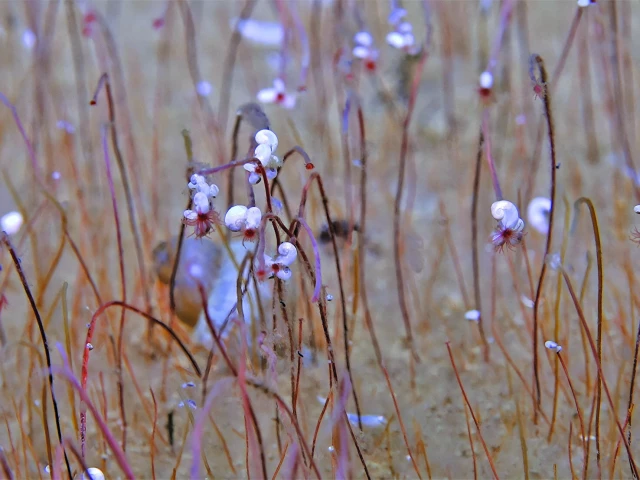A 'vibrant oasis' of chemical-eating creatures found in the deep Pacific
Submersible explores Kuril-Kamchatka and Aleutian trenches

Scientists diving to astounding depths in two oceanic trenches in the northwest Pacific have discovered thriving communities of marine creatures that get their sustenance not by eating organic matter like most animals but by turning chemicals into energy.
They found these chemosynthesis-based animal communities - dominated by tube worms and clams - during a series of dives aboard a crewed submersible to the bottom of the Kuril-Kamchatka and Aleutian trenches.
These creatures are nourished by fluids rich in hydrogen sulfide and methane seeping from the seafloor in this dark and frigid realm beyond the reach of sunlight. These ecosystems were discovered at depths greater than the height of Mount Everest, Earth's tallest peak.
The deepest one was 9,533 meters (31,276 feet) below the ocean surface in the Kuril-Kamchatka Trench. This was almost 25% deeper than such animals had previously been documented anywhere.
"What makes our discovery groundbreaking is not just its greater depth - it's the astonishing abundance and diversity of chemosynthetic life we observed," said marine geochemist Mengran Du of the Institute of Deep-sea Science and Engineering, or IDSSE, part of the Chinese Academy of Sciences, one of the authors of the research published on Wednesday in the journal Nature.
"Unlike isolated pockets of organisms, this community thrives like a vibrant oasis in the vast desert of the deep sea," Du added.
While some marine animals have been documented at even greater depths, nearly 11,000 meters (36,000 feet) below the surface in the Pacific's Mariana Trench, Du said, those were not chemical eaters.
In the new research, the scientists used their submersible, called the Fendouzhe, to journey down to what is called the hadal zone.
The hadal zone is where one of the continent-sized plates that make up Earth's crust slides under a neighboring plate in a process called subduction.
"The ocean environment down there is characterized by cold, total darkness and active tectonic activities," said IDSSE marine geologist and study co-author Xiaotong Peng, leader of the research program. Reuters























COMMENTS
Comments are moderated and generally will be posted if they are on-topic and not abusive.
For more information, please see our Comments FAQ